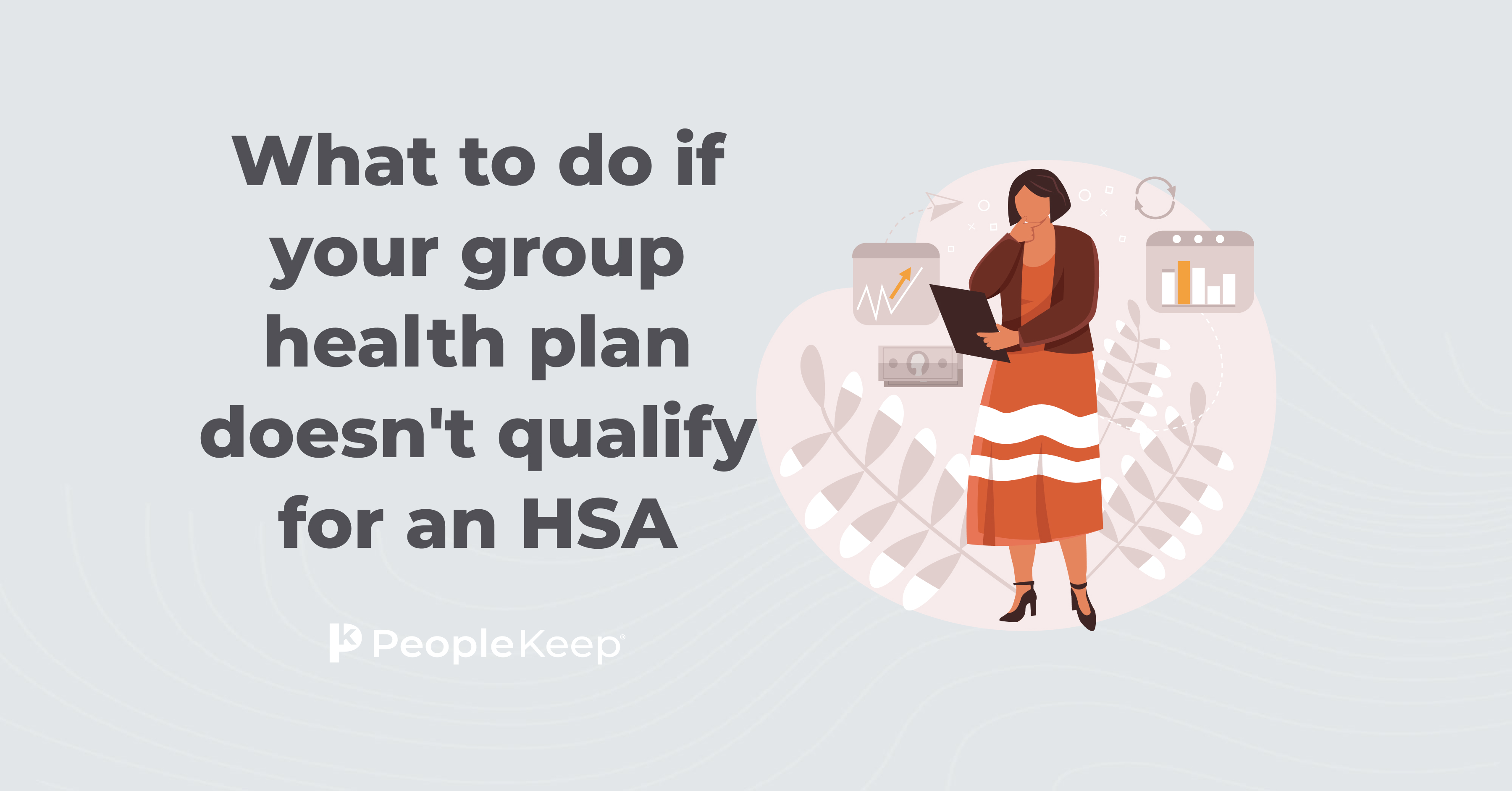What is a POS health plan?
By Chase Charaba on February 21, 2024 at 11:22 AM
Having the right healthcare coverage is essential for accessing quality medical services. As the healthcare industry continues to evolve, different types of health plans have emerged to cater to varying needs and preferences. One of these options is the point of service (POS) plan.
As an employer or individual looking for health coverage, you need to understand the options available to you. This article will give you a better understanding of what POS plans entail, including how they work, their benefits, and their limitations.
Takeaways from this blog post:
- A POS health plan, or point of service health plan, is a type of health insurance coverage that allows individuals to choose between in-network and out-of-network providers.
- POS health plans provide flexibility and choice when it comes to healthcare services, allowing individuals to see specialists and receive care from out-of-network providers with higher out-of-pocket costs.
- A POS plan is a hybrid of HMO and PPO plans.
What is a point of service plan?
A point of service (POS) health plan is a type of managed care health insurance that combines elements from both health maintenance organizations (HMOs) and preferred provider organizations (PPOs). The name comes from the idea that at each point of service, such as a healthcare provider or medical facility, plan participants can choose whether to seek in- or out-of-network care.
With a POS health plan, members can expect a wide range of coverage for healthcare services, including preventative care, hospital stays, prescription drugs, and more. The plan typically includes copayments for office visits and prescription medications, as well as deductibles and coinsurance for other services.
Members can also expect access to a network of healthcare providers but may have the flexibility to see out-of-network providers if needed, although at a higher out-of-pocket cost.
How a POS health plan works
Understanding how a POS health plan works is essential for members to make informed decisions about their healthcare and manage their expenses effectively. Here, we will discuss the key features of a POS health plan, how to access care within and outside the network, and the cost structure.
Overview of a POS health insurance plan
A POS plan combines an HMO’s cost-saving benefits and standard provider network with the flexibility to seek care outside the network, similar to a PPO.
Key features of a POS health plan include a designated network of healthcare providers that members are encouraged to use for the most affordable coverage. However, members also have the option to see healthcare providers outside of the network, although they will likely pay higher out-of-pocket expenses for doing so.
This hybrid nature allows members to receive specialized care from out-of-network providers while maintaining the cost-saving benefits of utilizing in-network providers. The specific network of providers will vary depending on the insurance company offering the POS health plan.
Primary care physician (PCP) and referrals to specialists
A primary care physician (PCP) plays a crucial role in managing an individual's overall medical care.
Their key responsibilities include:
- Providing preventive care
- Managing chronic conditions
- Diagnosing and treating common medical issues
- Serving as the main point of contact for any health concerns
Additionally, PCPs coordinate care with specialists, ensuring seamless and comprehensive healthcare for their patients.
Like an HMO, a POS plan requires members to choose a primary care doctor who manages their healthcare and provides referrals to specialists within the network.
When specialist care is needed, the process of getting referrals from a PCP involves consulting with the PCP about the specific need for specialized care. The PCP then provides a referral authorization form to a specialist they believe will best address the patient's medical needs. Because of the flexibility of a POS plan, this can be an in-network or out-of-network specialist. Policyholders will pay more for out-of-network doctors and specialists, however.
After obtaining the referral authorization and ensuring coverage, you can then schedule an appointment with the specialist. Keep in mind that without a referral, the POS plan may not cover your specialist visit, so it’s crucial to follow the proper steps to obtain a referral from your primary care provider.
Costs of a POS plan
The most significant cost of a POS plan is monthly premiums. Premiums for a POS plan vary based on your location and the specific plan you choose. For example, if you enroll in an individual POS plan from the Health Insurance Marketplace, the metallic tiers of coverage can affect your premium amount. A bronze or catastrophic health plan will have lower premiums than a gold plan.
Forbes1 found that the average monthly cost of a POS plan on the Affordable Care Act marketplace is $498 for a 27-year-old and $607 for a 40-year-old.
Premiums aren’t the only costs associated with a POS plan, however. Depending on your specific plan, you may also need to pay copays, coinsurance, and deductibles. Additionally, your plan will have an out-of-pocket maximum, which is the most you must pay for covered services in a plan year.
Comparing POS plans to PPOs, EPOs, and HMOs
POS, PPO, exclusive provider organization (EPO), and HMO plans all have different approaches to coverage, flexibility, and cost.
POS vs. PPO plan
POS plans have lower monthly premiums than PPOs, but the two types of plans share many similarities. PPOs and POS plans can cover out-of-network care in non-emergency situations, although at different rates. However, like a PPO, POS plans require a primary care physician and referrals to see specialists.
POS vs. EPO plan
An EPO is a type of healthcare plan that offers coverage for only in-network providers except in emergencies. This gives POS plans an advantage, as members can seek out-of-network care. However, EPOs don’t require primary care doctors, and you can see specialists without a referral.
POS vs. HMO plan
An HMO has lower monthly premiums than other types of plans. Like a POS plan, they require members to select a PCP and seek a referral for specialists. However, like an EPO, HMOs don’t cover out-of-network care except in emergency situations.
Pros and cons of POS plans
There are many benefits and disadvantages to POS plans. We’ll highlight some of the major pros and cons below.
Pros of POS plans:
- They have lower premium costs compared to PPOs
- They allow members to see out-of-network doctors, though at a higher cost
- They tend to have a better selection of in-network providers than HMO plans, but this depends on the plan
Cons of POS plans:
- Monthly premiums cost as much or more than EPOs and HMOs
- Seeing an out-of-network provider can result in needing to pay their fees upfront and submitting paperwork to the insurance company for reimbursement
- They require referrals to see specialists
Whether a POS plan is right for you depends on the needs of your organization or family. They can be a good choice if you’re willing to choose a PCP and your preferred doctor is already in your plan’s network.
Does a POS plan work with an HRA?
Whether you’re an organization with a POS plan looking to offer a health reimbursement arrangement (HRA) or you're an employee with an HRA and an individual POS plan, you need to know how HRAs interact with this type of insurance.
An HRA is an employer-funded health benefit that allows employers to reimburse employees for qualifying out-of-pocket medical expenses. Depending on the type of HRA they offer, this could include individual health insurance premiums.
In our first scenario, we’ll consider an employer looking to supplement a POS plan with an integrated HRA. Also known as a group coverage HRA (GCHRA), an integrated HRA is a powerful way to supplement an organization’s existing group health insurance. Employers can pair an integrated HRA with any type of group health plan, including POS plans.
The POS plan provides flexibility in choosing healthcare providers, while the HRA helps to cover out-of-pocket costs such as deductibles, copays, and coinsurance. This means that members can use their POS plan to access a wide network of providers and then use their HRA funds to pay for eligible healthcare expenses.
If you’re an employee with a stand-alone HRA, such as a qualified small employer HRA (QSEHRA) or an individual coverage HRA (ICHRA), your employer can reimburse you for your POS individual health insurance premiums. You can check your organization’s HRA plan documents for specific details on your health benefits.
If your employer uses PeopleKeep to administer their QSEHRA or ICHRA, you’ll submit your documents for your insurance premiums electronically through the software. Our team of experts will then review your documents and let your employer know when we’ve approved them for reimbursement.
Conclusion
A POS plan is a type of health insurance that offers coverage for in- and out-of-network providers like a PPO but requires a PCP like an HMO. This type of plan is an excellent option for you or your organization if you want the flexibility of out-of-network care but desire a PCP to coordinate care and refer you to specialists.
References
1. https://www.forbes.com/advisor/health-insurance/ppo-vs-pos/
Check out more resources
See these related articles

What to do if your group health plan doesn't qualify for an HSA
If your group health plan isn’t HSA-qualified, explore HSA alternatives that still offer tax advantages and help employees manage healthcare costs.

What health insurance premiums can Section 105 plans reimburse?
Discusses the types of health insurance premiums Section 105 plans can reimburse.

Can a business pay for employees' individual health insurance plans?
Find out if your small business can cover individual health insurance plans for employees. Learn more about the pros and cons of this option here.




